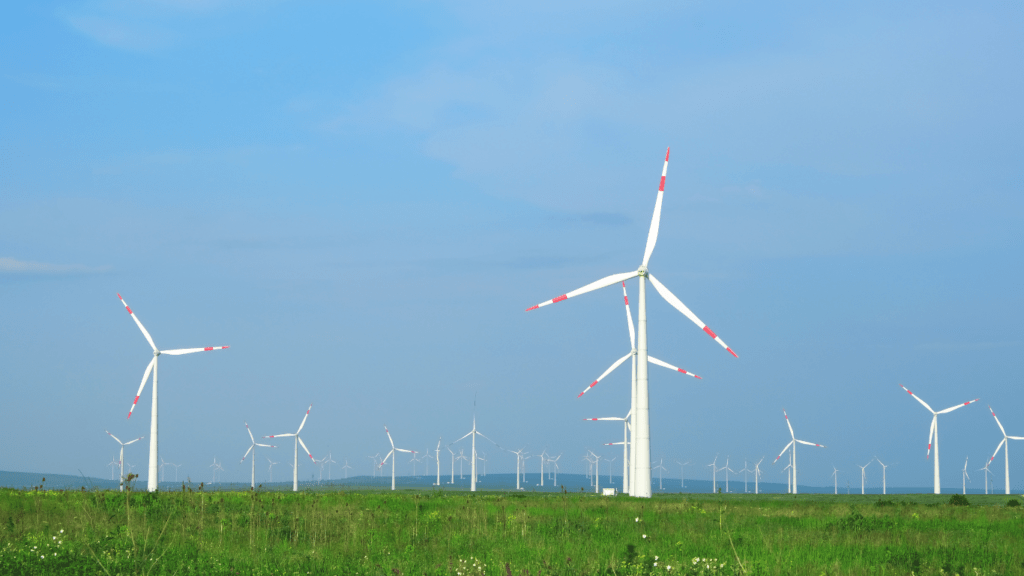Overview Of Home Energy Updates
Home energy updates focus on integrating modern technologies that enhance efficiency and sustainability. Solar panels remain at the forefront, using photovoltaic cells to convert sunlight into electricity. They’ve become more efficient and affordable, thanks to technological advancements and government incentives.
Wind turbines for residential use have also seen significant improvements. Smaller, quieter, and more efficient models are now available, making it feasible for homeowners to harness wind energy even in suburban settings.
Energy storage solutions, such as home batteries, are critical in maximizing renewable energy use. Batteries like the Tesla Powerwall store excess energy generated from solar panels or wind turbines, ensuring a steady power supply even during cloudy days or calm periods.
Smart home systems play a crucial role in optimizing energy use. Devices like smart thermostats and energy monitoring systems allow homeowners to track and manage their energy consumption in real time, reducing waste and lowering bills.
Heat pumps offer an energy-efficient alternative to traditional heating and cooling systems. By transferring heat rather than generating it, these systems use less energy and lower utility costs.
Incorporating green roofs and walls can improve home energy efficiency. These installations provide natural insulation, reducing the need for heating and cooling, and contribute to air quality improvement.
Lighting solutions have advanced with the increased use of LED bulbs, which consume less energy and have a longer lifespan compared to traditional incandescent and fluorescent bulbs.
Solar Energy Solutions
Solar energy solutions provide a sustainable option for homeowners seeking to reduce their environmental impact and energy bills. With several advancements, it’s essential to understand the different types, benefits, and installation process.
Types Of Solar Panels
- Three main types of solar panels dominate the market: monocrystalline, polycrystalline, and thin-film.
- Monocrystalline panels, known for their high efficiency and sleek design, consist of single-crystal silicon.
- Polycrystalline panels, made from silicon fragments, offer a cost-effective solution with slightly lower efficiency.
- Thin-film panels, using materials like cadmium telluride or amorphous silicon, are lightweight and flexible but less efficient than crystalline options.
- These options cater to various requirements and budget constraints.
Benefits Of Solar Energy
Solar energy provides numerous advantages. First, it significantly reduces electricity bills by generating power from sunlight. Second, it lessens dependence on fossil fuels, contributing to lower carbon emissions. Third, federal and state incentives can offset installation costs, making it financially accessible. Additionally, solar systems often increase property value by offering long-term energy savings potential and environmental benefits.
Installation Process
The installation process involves several steps. First, an energy audit determines suitability and system size. Next, selecting equipment and an installer is crucial. Panel placement often focuses on roof orientation and shading analysis. Permits and inspections follow, ensuring compliance with local regulations. The actual installation takes a few days, involving mounting panels, connecting the inverter, and wiring to the electric grid. Finally, post-installation inspections activate the system for use.
Solar energy solutions offer diverse options and benefits, aligning with various homeowner needs and environmental goals. Understanding types, benefits, and installation ensures the best decisions.
Green Energy Alternatives

Homeowners seeking sustainable energy options have several green alternatives to consider. Wind and geothermal energy are two viable solutions that complement solar power and enhance overall energy efficiency.
Wind Energy
Residential wind turbines offer a powerful solution for generating electricity. Modern turbines, designed to be smaller and quieter, can fit into suburban environments without much disturbance. By converting kinetic wind energy into usable power, these turbines can lower electricity bills and reduce dependence on fossil fuels. Whether mounted on roofs or installed in backyards, wind turbines efficiently harness natural energy.
Geothermal Energy
Geothermal energy leverages the Earth’s constant underground temperatures to provide heating and cooling. Ground-source heat pumps use buried pipes to transfer heat into homes during winter and remove heat in summer. This method boasts high efficiency and low operational costs. For effective use, geothermal systems require suitable land for installing underground loops but offer long-term savings and environmental benefits.
Cost And Savings Analysis
Assessing the financial implications of adopting solar and green energy solutions is crucial. Analyzing both initial investment and long-term savings helps homeowners make informed decisions.
Initial Investment
Solar panels, wind turbines, and geothermal systems demand varied initial investments. Monocrystalline solar panels typically cost between $1 to $1.50 per watt, with installation adding approximately $2,000 to $3,000 per kilowatt. Polycrystalline panels are cheaper, around $0.90 to $1 per watt, with similar installation costs. Thin-film panels, while less efficient, cost about $0.70 per watt.
Wind turbines for residential use cost from $3,000 to $8,000 per kilowatt, influenced by turbine type and installation complexities. Geothermal systems have higher upfront costs, ranging from $10,000 to $30,000, due to drilling requirements for ground-source heat pumps.
Long-Term Savings
Savings from green energy solutions manifest over time. Solar panel users can see up to 70% reductions in electricity bills. For instance, a 7kW solar system in California saves about $1,500 annually, recouping installation costs in 5 to 10 years.
Wind turbines also offer significant savings. A small 10kW turbine can generate around $1,000 to $1,200 worth of electricity yearly, paying off in 6 to 12 years. Geothermal heat pumps can reduce heating and cooling bills by up to 60%, saving users $1,500 to $3,000 annually, with a payback period ranging from 5 to 10 years.
Government incentives, such as:
- tax credits
- rebates
reduce initial costs, enhancing total savings. For example, the Federal Investment Tax Credit (ITC) offers 26% off solar installations, substantially lowering expenses.
Both the initial investment and long-term savings must be considered to understand the true cost-effectiveness of home energy updates.
Government Incentives And Rebates
Government incentives significantly reduce the costs of installing and maintaining solar and green energy systems. These initiatives make it easier for homeowners to adopt sustainable energy solutions.
Federal Programs
Federal programs provide substantial savings through tax credits and rebates. The Investment Tax Credit (ITC) allows for a 26% credit on solar energy system installations, translating directly into reduced costs. Additionally, the Residential Renewable Energy Tax Credit offers another 26% tax credit on expenditures related to wind turbines, geothermal heat pumps, and solar water heaters. The USDA’s Rural Energy for America Program (REAP) also provides grants covering up to 25% of energy system costs for agricultural producers and rural small businesses.
State-Level Incentives
State-level incentives often complement federal programs, providing further financial relief. California’s Solar Initiative (CSI) offers rebates based on system performance, reducing upfront costs significantly. New York’s NY-Sun program provides substantial incentives through the Megawatt Block Incentive Structure, which lowers per-watt costs as capacity targets are reached. Texas offers property tax exemptions for solar energy systems, eliminating additional taxes on added value. Massachusetts provides rebates through the Mass Solar Loan program, reducing loan interest for solar installations. Each state varies in the type and amount of incentives, often making green energy more accessible and affordable.



 Betsylie Sheetsin – Home Renovation Expert
Betsylie Sheetsin serves as the Home Renovation Expert at Castle Shelf House, specializing in giving practical advice for both small and large-scale home improvements. With years of experience in construction and renovation, Betsylie understands the importance of blending durability with design. Her insights into home renovation projects, along with expert advice on the latest materials and techniques, empower homeowners to tackle even the most ambitious projects confidently.
Betsylie Sheetsin – Home Renovation Expert
Betsylie Sheetsin serves as the Home Renovation Expert at Castle Shelf House, specializing in giving practical advice for both small and large-scale home improvements. With years of experience in construction and renovation, Betsylie understands the importance of blending durability with design. Her insights into home renovation projects, along with expert advice on the latest materials and techniques, empower homeowners to tackle even the most ambitious projects confidently.
